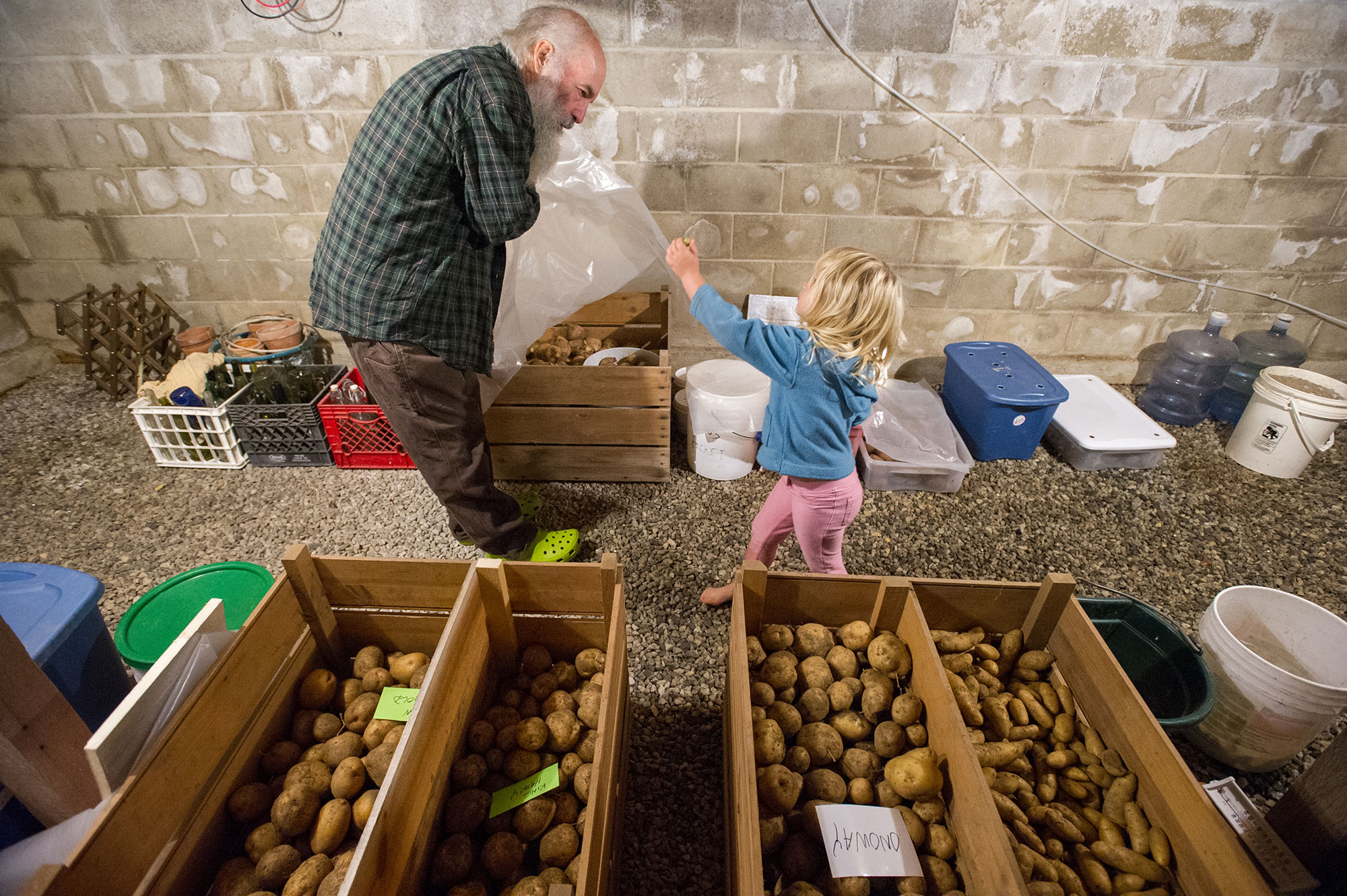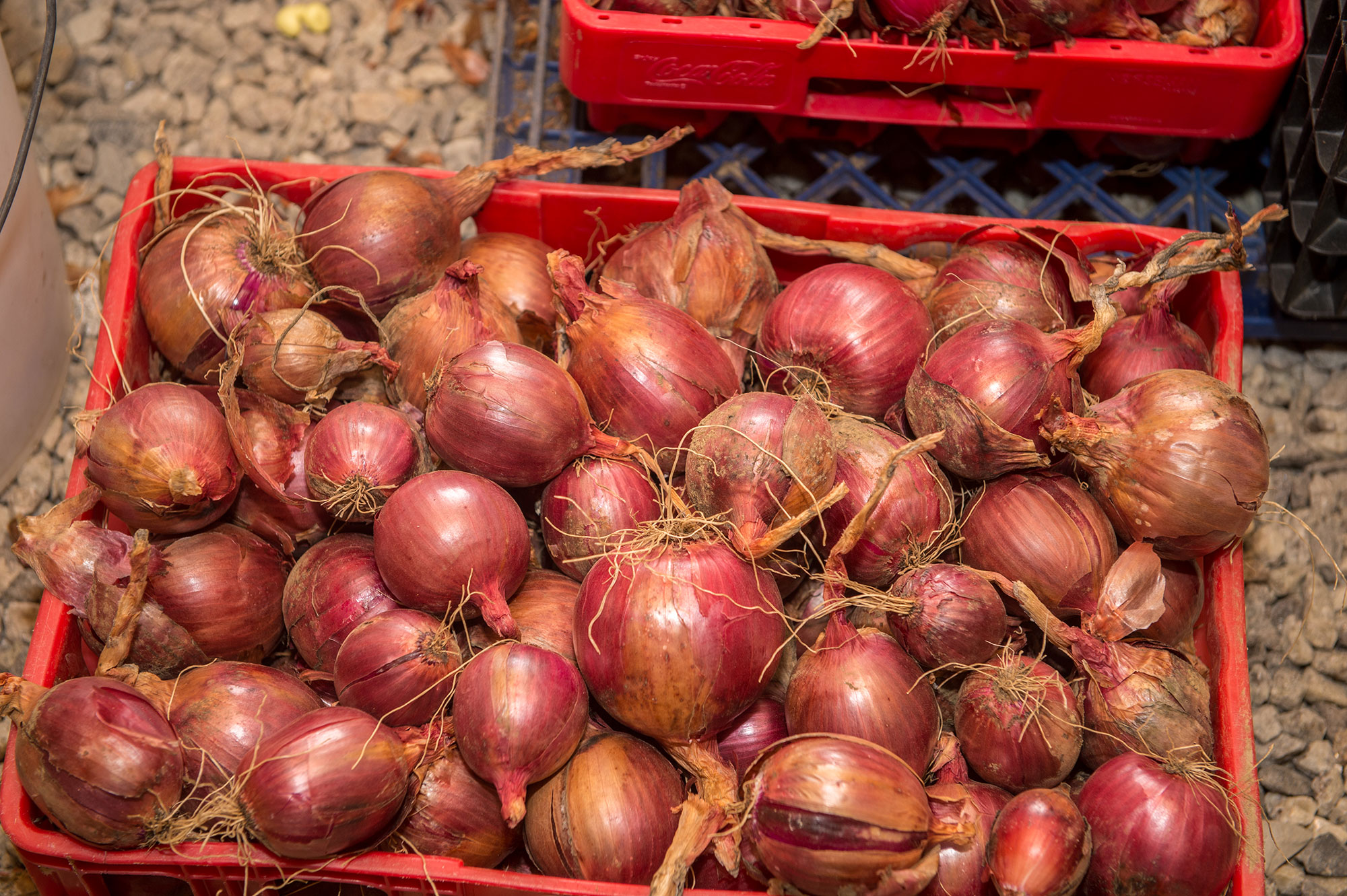How to make DIY root cellar storage
Root cellars among the oldest, most reliable ways to store produce. Here’s how to make DIY root cellar storage.

Long before the age of mechanical refrigeration, people needed a way to keep food safely stored over the non-growing months of winter.
Among the oldest of those storage methods is the root cellar, an underground room that acts like a natural refrigerator maintaining temperatures in the mid-30 degrees Farenheit during the winter and mid-50s in the summer.
Fast forward to the present and despite the never ending wave of new food storage appliances on the market, there are many small farms and home gardeners who prefer to do things the old fashion way.
And whether it’s the harvest from a rural homestead or urban rooftop garden, there’s a DIY root cellar-type storage system to match.
“I would say that most people think of a root cellar as a thing you need to dig out or that has to be an external building dug into the side of a hill,” said Jason Liley, sustainable agricultural professional with University of Maine Cooperative Extension. “That is really not the case for most crops.”
What makes a good root cellar?
Root cellar type storage can be as elaborate as a separate, subterranean structure, or as simple as a collection of rubber totes filled with peat moss, according to Liley.
“When I teach about root cellaring storage, I put up a diagram of a house,” he said. “I have people look and think about their own homes.”
Lilley said he then has them identify places in their homes that are warm and dry, warm and moist, cool and dry and cool and moist — what he calls residential microclimates.
“Those four different microclimates fit the storage requirements for most fruits and vegetables,” he said.
Basements, he said, are a perfect example of those indoor microclimate variations.
“If you have a dug foundation it will likely be cool and moist down there,” Lilley said. “If your furnace is in the basement it will likely be drier [and] you can use those microclimates around the house.”
The University of Maine Cooperative Extension service has an online fact sheet and guide that gives the recommended temperature and humidity storage conditions for just about many fruits and vegetables.
“Monitoring [the storage] is a huge component,” Lilley said. “You should check them every week and feel around to check for any spoiling produce [because] it is true one bad apple can spoil a whole crop.”
Apples, for example, can live happily for up to a year stored in conditions where the temperatures range between 30- and 40-degrees with 90 to 95 percent humidity levels.
Winter squash, on the other hand, do better when stored at 50-degrees where the humidity ranges between 50 and 70 percent for up to six months.
Since produce like carrots, beets, parsnips or celery root need to hold onto moisture in storage so they are not shriveled and inedible after a few months.
How to use totes as DIY root cellar storage

Lilley said an easy DIY root storage system for root crops needing moisture is in peat moss inside a plastic tote.
“The peat moss will keep the moisture right where the vegetables want it to be,” he said. “And as long as the temperatures remain in the mid 30s to 40s, they will stay dormant and not sprout.”
Those root crops can also be stored in sand, Lilley said, but added he prefers the peat moss as it is easier to clean off the vegetables than the sand.
Important elements of DIY food storage closets
A step up from storing crops in totes is building an insulated closet or small room in a basement or unused corner of the house, Lilley said.
“In that space you can keep things at different temperatures and humidity than the rest of the house or basement,” he said.
Lilley said if possible, it’s a good idea when creating that space in a basement to incorporate an area that has a ground level window that can provide air circulation and help modulate temperatures and humidity.
“You can also take PVC pipe and run it from the window down to the bottom of the space,” he said. “That will funnel the cooler air to the lower part of the space and it will be warmer toward the top.”
That way there are microclimates within the microclimate of the insulated space.
How to dig a root cellar
“If you want to go all the way [in root cellar storage] and use the temperature of the earth, you can dig a seperate storage space,” Lilley said. “In Maine the temperature below the frost line is around 52 degrees and you have to dig down about four feet to hit that.”
Once the space is dug and properly covered with an insulated roof and walls, Lilley said it’s a good idea to cover the floor with gravel to keep any ground moisture from creating a muddy mess.
It’s a good idea to also install shelving in a dug root cellar to keep produce above any excess moisture that creeps in.
“If done properly, there should be enough air movement within your space that it will not become too moist or too dry,” Lilley said. “You want to keep that moisture level high enough that the crops don’t dry out [and] not so dry that they dry out and the air becomes musty.”
How to clean your root cellar in the spring
Regardless if the winter storage is as simple as plastic totes or elaborate as a dug and lined root cellar, Lilley said the space should be thoroughly cleaned out at the start of each growing season.
“You want to go in early on in the spring and give everything a good spray with hydrogen peroxide or bleach,” he said. “Then place things in the sun for a few days, or open up the doors and let it all dry and air out.”
Anybody, he said, can have successful winter produce storage.
“It can be as simple as a bag of potatoes in your entryway that is cooler and drier than the rest of the house or as fancy as a whole structure built into the north side of a slope,” he said. “It’s really dependent on how much work you want to do.”

We just redid an older root cellar, about 30 yrs old. The cellar ie constructed of all concret including roof, with a 1″ layer if insulation then covered with 8 th 10 ” of dirt. We just removed the exterior door and replaced it with a porch about the same dims of the cellar 6 1/2 feet x 6 1/2 ft. The cellar has a 4″ vent in the roof and about a 3″ vent in the lower section of the cellar door. Our temps are unusually warm between 5 tho 16 *c for oct 31. The temps in the cellar is around 8* c . I’m thinking that’s too warm it should be between 2 to 4 . Wondering if we should have any insulation in the porch or cellar. Hope you can help
Hello Doreen, and thank you for your question! It sounds like you may need to do a bit of modification, but I am double checking to determine what would work best in your situation. I will have that information as soon as possible today.
–Julia
Hi Doreen! Here is the information from the expert in the making of root cellars! I hope this helps. Please let me know!
–Julia
The ground temperature below frost line in Maine is about 47 degrees F (8C), so it makes sense that your root cellar is staying pretty constant at that temperature. Adding more insulation will not change that. While not ideal, It is a sufficient temperature for short term storage of veg crops. When the outside temperatures start to drop, you can use the vents to allow cold air in to drop the temp to the mid 30’s. Keep a close eye on it though. 35 degrees is pretty ideal but 31 (just below freezing) will ruin many crops.